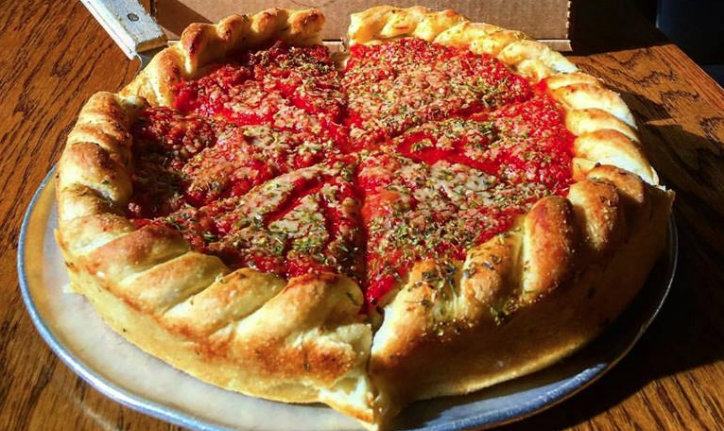Originally published in the March 2018 issue of (614) Magazine

Chuck Lamb clutched his mother’s hand as the steady stream of mourners approached his father’s casket. He recognized a few faces from the family’s infamous backyard poker parlor, attracting traveling card sharks eager to ante up with the local gambling legend and sometimes moonshiner. Even Chuck had his own side hustle since the age of six, running sandwiches and chips to the players for tips long into the night.
For someone as fabled as his father, the funeral still had way too many folks for just family and friends. Reverend Billy Graham himself was there to deliver the eulogy, but it was the guys in fitted suits and fedoras that stood out in rural North Carolina — each passing by the casket in suspicious silence. Chuck whispered into his mother’s ear wanting to know why they were there. Her reply was almost prophetic.
“They’re here to make sure he’s really dead.”
Columbus seems to inspire unlikely celebrities, from a long-shot boxer named Buster to a guy whose penchant for potato salad nearly broke the internet. Chuck Lamb may not have the same name recognition or notoriety, but you’d be hard-pressed to find any actor more committed to character. He’d moved here to his mother’s hometown as a wide-eyed kid from the foothills of Appalachia, but always dreamed of something a bit bigger. Without the looks or chops expected by an industry built on image and experience, this everyman turned a singular skill into a career as a corpse.
Chuck Lamb is the “Dead Body Guy”.
“It was always on my bucket list to see my name in the credits for a movie or television show,” he explained. “I loved the beginning of Law & Order. Every episode opened with Jerry Orbach standing over a dead body making some smart-ass remark.”
Chuck and his wife Tonya hatched a plan. Posed in creative states of comical demise, she photographed her husband for the newly registered deadbodyguy.com website, which he’d whipped together on a whim. (Television crime dramas must always be looking for victims, right?)
“She came up with several clever ways to kill me and we posted the pictures. Tonya made up the blood and everything,” Lamb quipped. “Within six weeks, we were on the front page of the New York Times.”
That’s when macabre soon became surreal. Eager to land the first morning television interview, the major networks each angled for Lamb’s exclusive attention.
“I was on the phone at home with both the Today Show and CBS, clicking between the two, and Good Morning America on my cellphone — all at the same time,” Lamb recalled. “They all wanted me to do their show first.” NBC ultimately came back with the best offer, a promised appearance on one of their series, and CBS was still ready to send a limo to pick him up at Rockefeller Center to immediately do their show the same day. ABC wasn’t interested in third place and passed altogether, or so it seemed.
“I was at Port Columbus getting ready to catch my flight to New York and a camera crew from ABC tried to ambush me for an interview to air on Good Morning America before I could get to the Today Show,” he revealed. Lamb was having none of it. “When I got there, NBC actually booked my hotel room under an assumed name to keep the other networks from finding me.”
Forget slasher movies — network television is cut-throat.
Numerous notable and also-ran roles followed, but never quite ignited demand for a well-seasoned stiff. Expectations were high for an appearance on an episode of the sitcom “What I Like About You”, but most of Lamb’s cameo was left on the cutting room floor.
“I went out there for two days, sat for hours and hours, and all you see is me slumped over and my bald head. They never showed my face,” Lamb lamented. “That was supposed to be my breakout performance. But if you blinked, you missed it.”
There was also that time the Dead Body Guy bumped into the Terminator.
Schwarzenegger happened to be walking into Hollywood Casino at the same moment as Lamb. It turns out Chuck had worked on a TV pilot with Arnold’s old acting coach and introduced himself. The two shared memories of working with their mutual friend while someone from Schwarzenegger’s entourage ran out to the parking lot to grab a copy of his autobiography, Total Recall, which Arnold personally inscribed.
Lamb’s most recent television work was his most animated to date, an upcoming appearance on the game show reboot of To Tell The Truth, featuring Denise Richards, Kal Penn, Ken Marino, and Theresa the Long Island Medium. Celebrity contestants ask a panel of three guests questions and try to guess who are the imposters, and who is telling the truth. Chuck’s delivery was, of course, deadpan.
“The producers contacted me about doing the show. We shot it months ago, but it hasn’t aired yet,” he noted. “Theresa came over and asked to see all of our hands and immediately said she knew who it was. I fooled two of the four.”
Celebrity, living or otherwise, was at best a stunt that seemed to outlast its original intent, and Law & Order. Following a few unfortunate injuries, and multiple back surgeries, Lamb realized retirement was in his cards. (Save maybe a casting call from The Walking Dead — a dying wish, if you will.)
“After more opportunities and laughs than I ever expected or deserved, I need to stop before it actually kills me.” he explained, suggesting he’d like to pass on the legacy and namesake of the Dead Body Guy to the right person, like Zorro or Batman handing the mask to the next anonymous hero. “I don’t want this dream to die with me.” ▩







